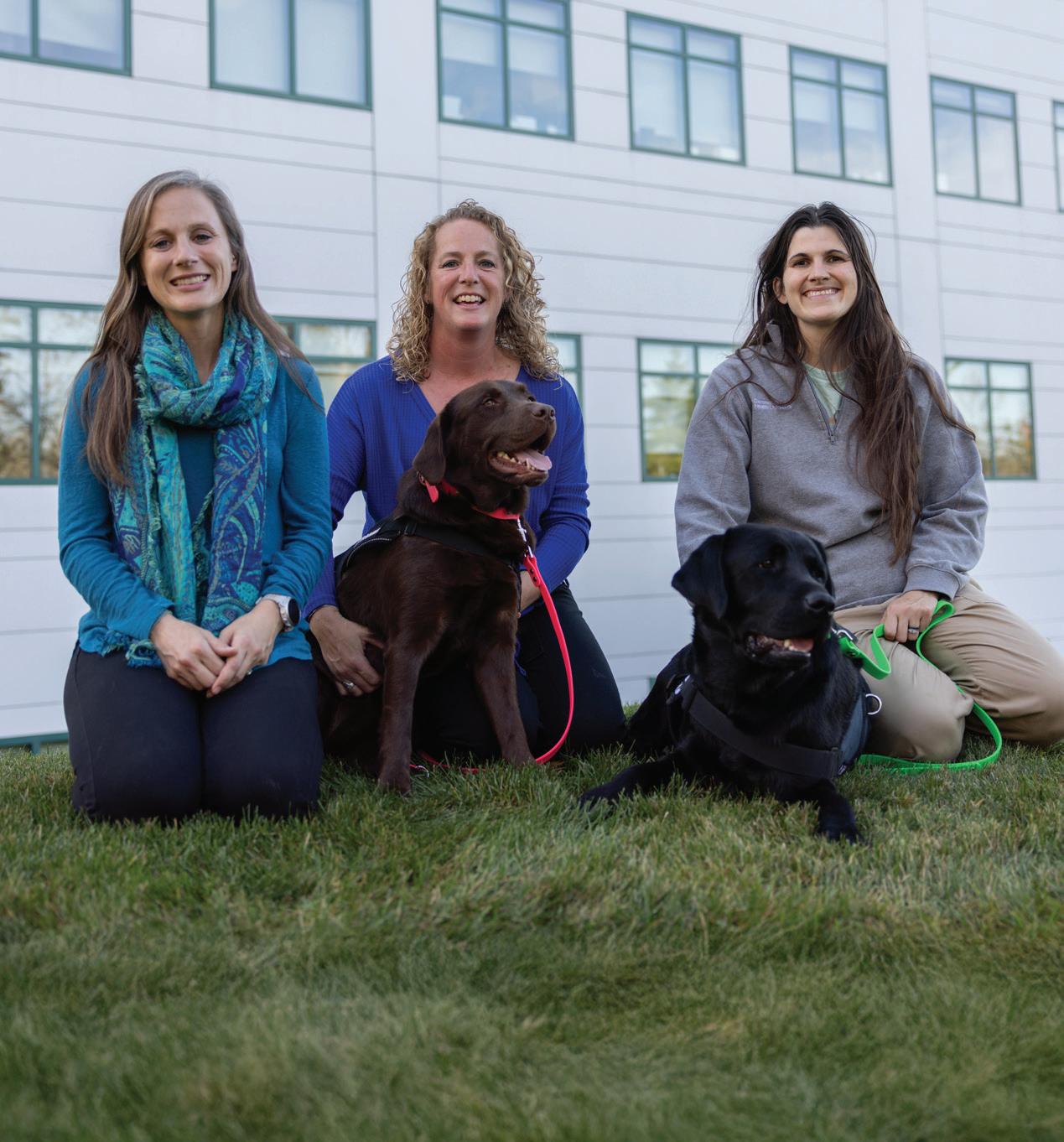
3 minute read
“AMAZING. TRANSFORMATIVE.”
“AMAZING. TRANSFORMATIVE.”
That’s how Torie Miele, CCLS, a Child Life specialist at Dartmouth Health Children’s (DHC), describes the work of two facility dogs, Winnie and Maverick, who will soon be spending their days with patients and their families at DHC and Dartmouth Hitchcock Manchester to provide comfort, support and therapeutic benefits.
Miele, the trained handler for Maverick, says, “With this new program, the facility dogs will help children feel safe in sharing their worries, feel comfortable in the medical setting, and be an active participant in preparation and support during medical procedures. They can also help identify those most in need and be involved in teaching positive coping skills.” The team of Miele and Maverick will be at DHC while Sonya Charles, CCLS, another Child Life specialist and trained handler, will work with Winnie at Dartmouth Hitchcock Manchester.
“Facility dogs add to Child Life practice in ways we would not be able to do on our own,” Charles says. “They are cortisol scent trained to help them identify stressed, overwhelmed and anxious patients we might otherwise miss. Plus, dogs are nonjudgmental and unable to voice criticism, so they help build quick rapport.”
She adds that patients and their families aren’t the only ones who benefit from the presence of facility dogs; staff does as well. “They provide support for Code Lavenders—they’ve both already done this!—and other follow-ups after challenging situations. There’s also the exposure to the dogs on a daily basis, even if it’s just walking past or a quick stop for a pat. Plus, staff benefits by being able to witness the immense impact the dogs have on our patients and families.”
Miele says the specialized training of the dogs, which takes place at ColdSprings Healing Paws in New Ipswich, NH, starts shortly after birth. “At about 8 to 10 weeks old, they go through an official temperament test to determine what job they’d be most fitted for. From there, along with general skills, they get public access and basic obedience training where they are exposed to a wide variety of environmental elements— elevators, subways, farm animals, you name it.”
After that, she adds, they learn more specific tasks like opening doors, closing cabinets and turning on light switches. Handlers like Miele and Charles go through months of training with their dogs and have to pass a certification exam. The dogs live with their handlers and take part in family life, with dog-centered activities like hikes and vacations to dogfriendly destinations. “That helps them relax on their time off,” Miele says.
Is the facility dog program the same as the therapy dog program?
“We have a well-established volunteer therapy dog program, Hug a Hound,” says Charles, “but the training and goals of the therapy dogs is different than that of our new facility dog program and dogs. With that said, we know we could not function without our amazing volunteers and their dogs.”
Charles points out that research has found that dogs have been utilized as tools and partners for humans for more than 30,000 years. “Wolves would receive food from humans in exchange for protection and companionship. It is amazing to think how far this partnership has grown, and how the work of a facility dog with a trained Child Life specialist can make such a large impact on patients and families.”







